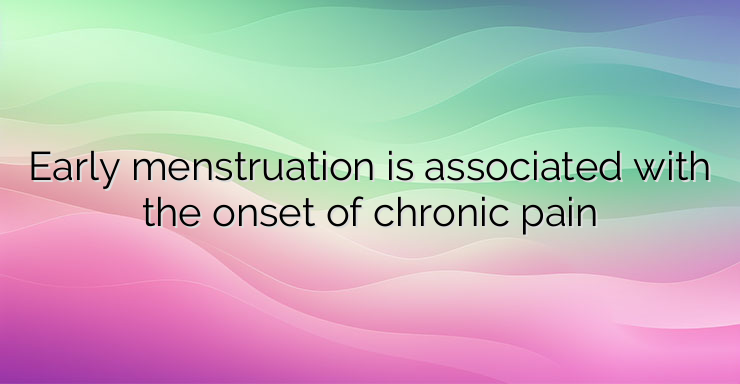Women who first menstruate at an early age are exposed to the more prolonged action of estrogens throughout their lives, unless this is terminated by the onset of premature menopause. Increased exposure to estrogens is associated with an increased risk of breast cancer. In fact, early menstruation and late menopause are risk factors for developing breast cancer, as is age. A study from Oslo University Hospital has revealed that increased estrogen levels due to early onset of menstruation are also associated with an increased risk of chronic pain in women. Early menstruation and chronic pain The study included data from more than 12,000 women with an average age of 55. The age at which they had their first period ranged from 9 to 18 years, with a mean age of 13 years. 40% of the women in the study were affected by chronic pain. Looking at the relationship between the age of first menstruation and the presence of chronic pain, the researchers found that the relative risk of chronic pain decreased by 2% for each one-year delay in menstruation. Menarche at a later age was associated with lower levels of chronic pain in each of the 10 body parts studied, most notably in the chest and abdomen. However, onset of menses at an early age was associated with longer pain duration. Late onset of menstruation reduces the risk of chronic pain by 7%. Chronic pain in women It is known that the prevalence of chronic pain is higher in women than in men. However, the reasons for these differences are not fully understood. One of the reasons could be the different hormonal exposure of women and men throughout life, explained Charlotte Indre Lund, the first author of the study. In fact, previous studies have found a link between early menstruation and various types of pain such as migraines or low back pain. Other studies suggest that there may be interactions between sex hormones, the immune system, and the nervous system that influence the development of chronic pain. It is certain that the manifestations of chronic pain in women worsen in childbearing age. This is because it is likely that the hormones produced by the ovaries – estrogens and progesterone – may play a role in modulating pain. When we talk about chronic pain, we mean migraines, musculoskeletal pain, or pelvic and back pain. There are many studies that suggest a relationship between hormonal changes and the intensity, threshold and manifestations of chronic pain. Only in the case of migraine has the connection with female hormones been proven, and in fact there is the so-called menstrual migraine. When examining the causes of chronic pain, among the main factors are a lack of physical activity, a greater tendency to stress or anxiety in women, and a tendency to chronic diseases such as osteoporosis, which ultimately affects motor,the endocrine and cardiovascular systems. Behind all this are the female sex hormones – estrogens and progesterone, so it is logical to think that early onset of menstruation and late menopause would increase the risk. In any case, a healthy lifestyle that includes a balanced diet, physical activity, and stress management can significantly reverse this risk in favor of healthier aging without chronic pain. References: https://www.sabervivirtv.com/ginecologia/primera-regla-pronto-mas-riesgo-dolor-cronico_6923 https://journals.lww.com/pain/Abstract/9000/The_association_between_age_at_menarche_and.97769.aspx?utm_source =press&utm_medium=press&utm_campaign=pain_pr_030422


Leave a Reply